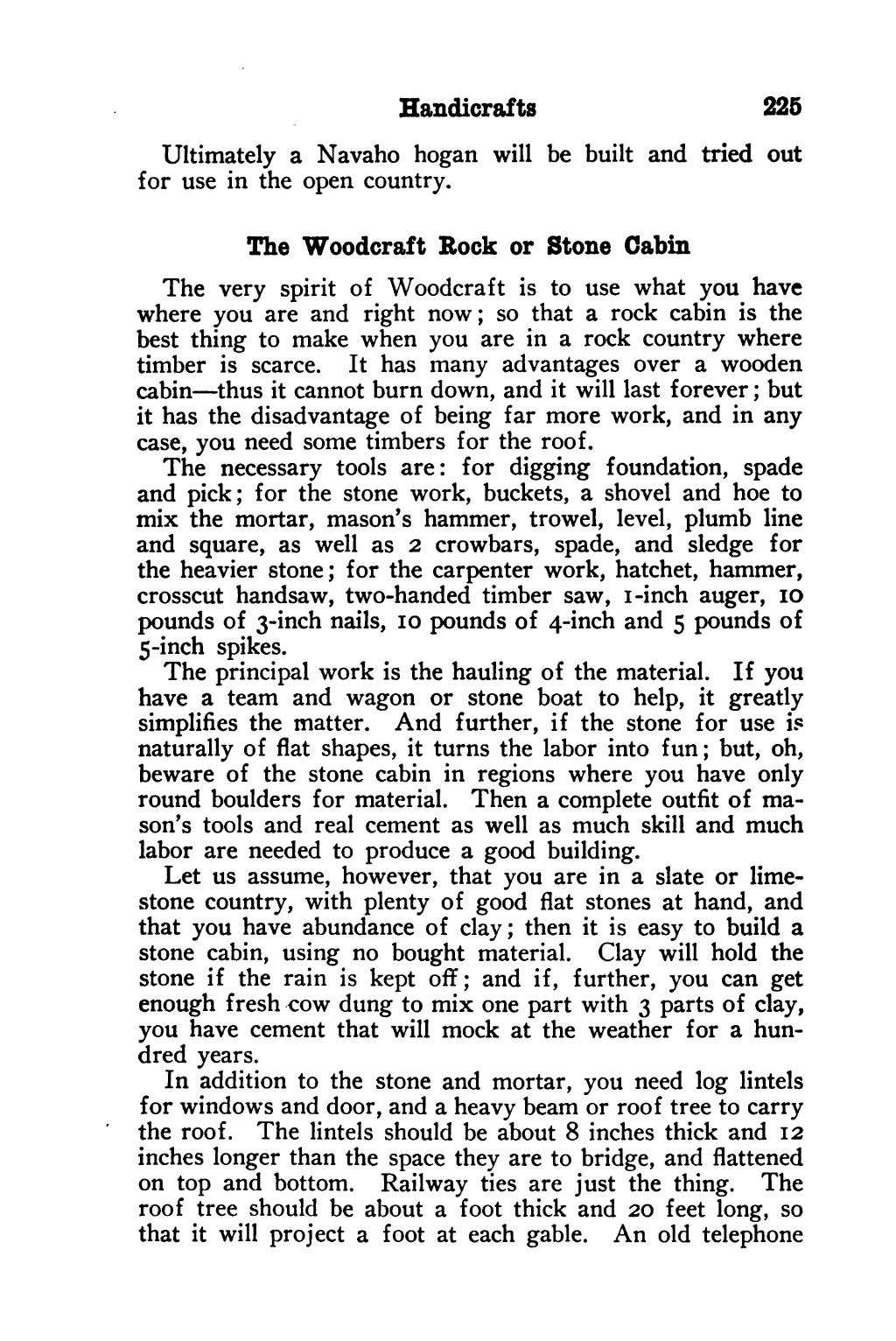Handicrafts 225 Ultimately a Navaho hogan will be built and tried out for use in the open country. The Woodcraft Rock or Stone Cabin The very spirit of Woodcraft is to use what you have where you are and right now; so that a rock cabin is the best thing to make when you are in a rock country where timber is scarce. It has many advantages over a wooden cabin—thus it cannot burn down, and it will last forever ; but it has the disadvantage of being far more work, and in any case, you need some timbers for the roof. The necessary tools are: for digging foundation, spade and pick; for the stone work, buckets, a shovel and hoe to mix the mortar, mason’s hammer, trowel, level, plumb line and square, as well as 2 crowbars, spade, and sledge for the heavier stone; for the carpenter work, hatchet, hammer, crosscut handsaw, two-handed timber saw, I-inch auger, 10 pounds of 3-inch nails, 10 pounds of 4-inch and 5 pounds of 5-inch spikes. The principal work is the hauling of the material. If you have a team and wagon or stone boat to help, it greatly simplifies the matter. And further, if the stone for use is naturally of flat shapes, it turns the labor into fun; but, oh, beware of the stone cabin in regions where you have only round boulders for material. Then a complete outfit of ma- son’s tools and real cement as well as much skill and much labor are needed to produce a good building. Let us assume, however, that you are in a slate or lime- stone country, with plenty of good flat stones at hand, and that you have abundance of clay; then it is easy to build a stone cabin, using no bought material. Clay will hold the stone if the rain is kept off; and if, further, you can get enough fresh cow dung to mix one part with 3 parts of clay, you have cement that will mock at the weather for a hun- dred years. In addition to the stone and mortar, you need log lintels for windows and door, and a heavy beam or roof tree to carry the roof. The lintels should be about 8 inches thick and 12 inches longer than the space they are to bridge, and flattened on top and bottom. Railway ties are just the thing. The roof tree should be about a foot thick and 20 feet long, so that it will project a foot at each gable. An old telephone
Stránka:roll 1931.djvu/241
Z thewoodcraft.org
Tato stránka nebyla zkontrolována
